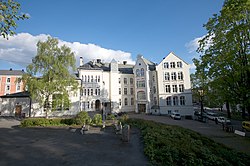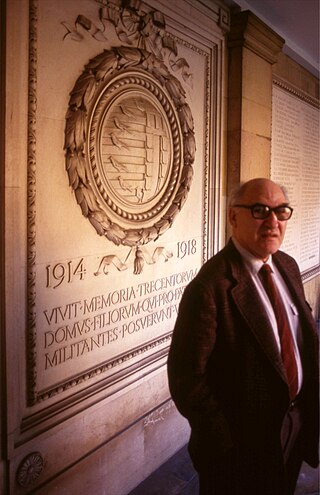
Gerhard "George" Lachmann Mosse was a German-American social and cultural historian, who emigrated from Nazi Germany to Great Britain and then to the United States. He was professor of history at the University of Iowa, the University of Wisconsin–Madison, and also in Israel, at the Hebrew University of Jerusalem. Best known for his studies of Nazism, he authored more than 25 books on topics as diverse as constitutional history, Protestant theology, and the history of masculinity. In 1966, he and Walter Laqueur founded The Journal of Contemporary History, which they co-edited.

Frogner Manor is a manor house and former estate in today's borough of Frogner in Oslo, Norway. The estate comprised most of the modern borough of Frogner, which has been named after the estate, and Frognerseteren with parts of the Nordmarka forest (Frognerseterskogen). The remaining part of the estate is now the site of the Frogner Park, with the manor house found in the south of the park and the Vigeland installation in the park's centre. The 18th century buildings on the grounds now house the Oslo City Museum.

The Four Greats is a term used for four of the most influential Norwegian writers of the late 19th century.

MF Norwegian School of Theology, Religion and Society, formerly the Free Faculty of Theology and MF Norwegian School of Theology, is an accredited Norwegian specialized university focused on theology, religion, education and social studies, located in Oslo, Norway. It is one of three private specialized universities in Norway, alongside VID and BI.

The Norwegian Academy of Music is a university-level music conservatory located in Oslo, Norway, in the neighbourhood of Majorstuen, Frogner. It is the largest music academy in Norway and offers the country's highest level of music education. As a specialized university, it offers both undergraduate and postgraduate courses. Throughout the years the Academy has educated many of Norway's most renowned musicians.

Ludvig Daae was a Norwegian jurist, landowner and politician for the Liberal Party. He was the Norwegian Minister of the Army from 1884 to 1885 on the cabinet of Prime Minister Johan Sverdrup.
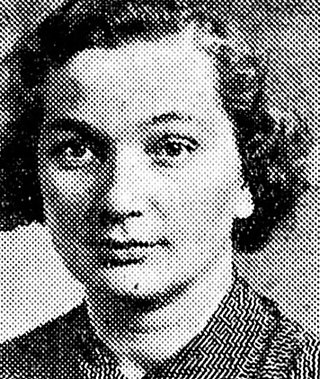
Henriette Bie Lorentzen, born Anna Henriette Wegner Haagaas, was a Norwegian journalist, humanist, peace activist, feminist, co-founder of the Nansen Academy, resistance member and concentration camp survivor during World War II, and publisher and editor-in-chief of the women's magazine Kvinnen og Tiden (1945–1955).
The New School Movement Foundation in Oslo opened the first New School in Autumn 2004. The Foundation is the umbrella organisation for the New School Movement. The founder of the School is Mosse Jørgensen. The New School is a semi-private/semi-public, not for profit organisation owned by the parents of the children. The movement behind the school traces its origins to the core of the historical establishment of research-based Pedagogics at the University of Jena in 1927 by Professor Peter Petersen. Pedagogy was then a novel science as a humanistic science within the University, Academic sector. The New school was precedented by a high school, The Research High School in Oslo, founded by Mosse Jørgensen in 1969, based on the same research and tenets as the New School of 2004 in Oslo, Norway. The movement behind is understood as the movement creating the Unity school reform in 1936 in Norway, and is associated with the international school reform-movement for a child friendly, child oriented school. This reform made the Norwegian school system to be the first in the World to found a national public educational system on the findings of the scientific research on the novel science of Pedagogy. That is a school that takes as its primary reasons the individual potential for practical and theoretical learning, communal responsibility and democratic skills. The New School is defined by the following parameters. :

Leif Hans Larsen Tronstad DSO, OBE was a Norwegian inorganic chemist, intelligence officer and military organizer. He graduated from the Norwegian Institute of Technology in 1927 and was a prolific researcher and writer of academic publications. A professor of chemistry at the Norwegian Institute of Technology from 1936, he was among the pioneers of heavy water research, and was instrumental when a heavy water plant was built at Vemork.
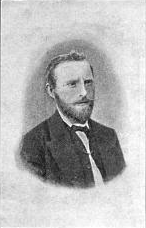
Steinar Schjøtt was a Norwegian educator, philologist and lexicographer.
Events in the year 1929 in Norway.

Oslo Commerce School is a full-time public school in Oslo, Norway, specialising in the teaching of financial and business management.
Mosse Jørgensen was a Norwegian school principal and non-fiction writer.

The Hartvig Nissen School, informally referred to as Nissen, is a gymnasium in Oslo, Norway. It is located in the neighborhood Uranienborg in the affluent West End borough of Frogner. It is Norway's oldest high school for girls and is widely considered one of the country's two most prestigious high schools alongside the traditionally male-only Oslo Cathedral School; its alumni include many famous individuals and two members of the Norwegian royal family.

Akademiet Norge is a Norwegian private education institution. Consisting of several schools in several cities, it is the largest private school chain of this type in the country.
The 1956–59 Nordic Football Championship was the seventh tournament staged. Four Nordic countries participated: Denmark, Finland, Norway and Sweden. Sweden won the tournament, its fifth Nordic Championship win.
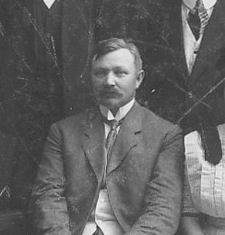
Theodor Christian Petersen Haagaas was a Norwegian mathematician, mathematics educator and private school owner.

Frogner School was a secondary school at Frogner in Oslo, Norway.
Håkås, formerly spelled Haagaas and Haakaas, is a hill and an area near the lake Øyeren in Båstad in Trøgstad, Østfold, Norway, 25 kilometres southeast of Oslo. It is also the name of three neighbouring farms in the immediate vicinity of the hill. In 2016 the Håkås nature reserve was established by the King-in-Council; consisting of the Håkås forests near Øyeren, it was fully protected due to its importance to biodiversity.
The Heltberg School, formally Heltberg and Reehorst Real and Latin School, informally known as Heltberg's Student Factory, was a Norwegian gymnasium that offered a fast track to the examen artium university entrance exam which admitted pupils as students. It was founded by Henrik Anton Heltberg (1806–1873) and Wessel Joachim Andreas Reehorst (1824–1910) in 1846. It was Norway's best known intensive gymnasium in the 19th century, and was popular with pupils from the districts – i.e. the areas outside the capital of Christiania and its immediate surroundings. At the time schooling at this level was all private in Norway and the country had relatively few gymnasiums. Only a very small percentage, mainly men who intended to pursue a career as lawyers, physicians or priests, attended a gymnasium in preparation for taking the university entrance exam. The Heltberg School is famous is Norwegian cultural and literary history due to being attended by many notable figures such as Henrik Ibsen, Bjørnstjerne Bjørnson, Aasmund Olavsson Vinje and Jonas Lie. In Denmark and Norway pupils became students by virtue of passing the university entrance exam and thus being matriculated at the university, hence the school's nickname, Heltberg's Student Factory. Although himself never a student of Heltberg, Arne Garborg famously portrayed him in his novel Bondestudentar (1883). A similar school that existed 1915–1955, Haagaas School, was described by Mosse Jørgensen as "the new Heltberg [school]."
